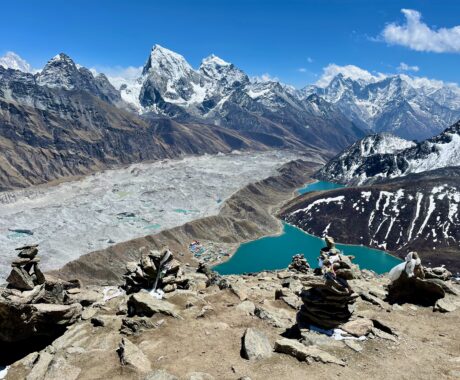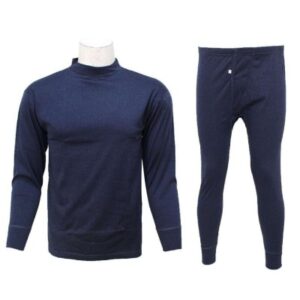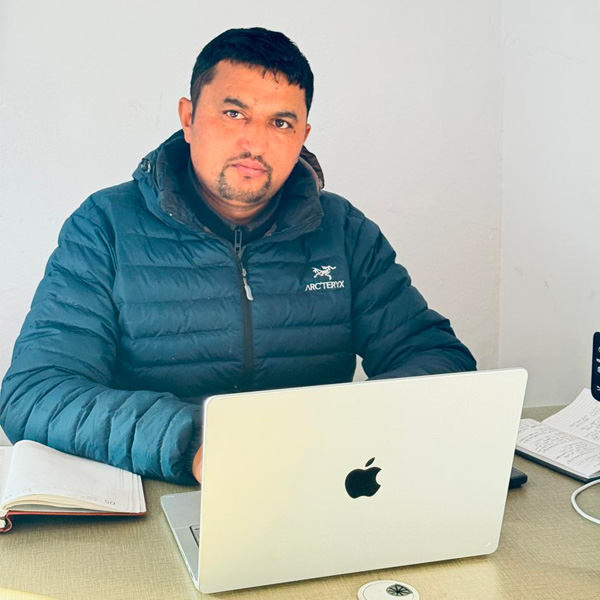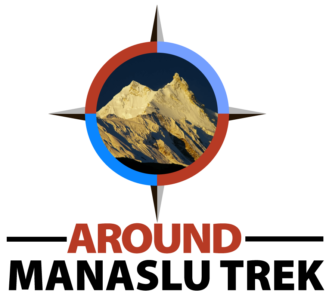Mt. Manaslu Expedition
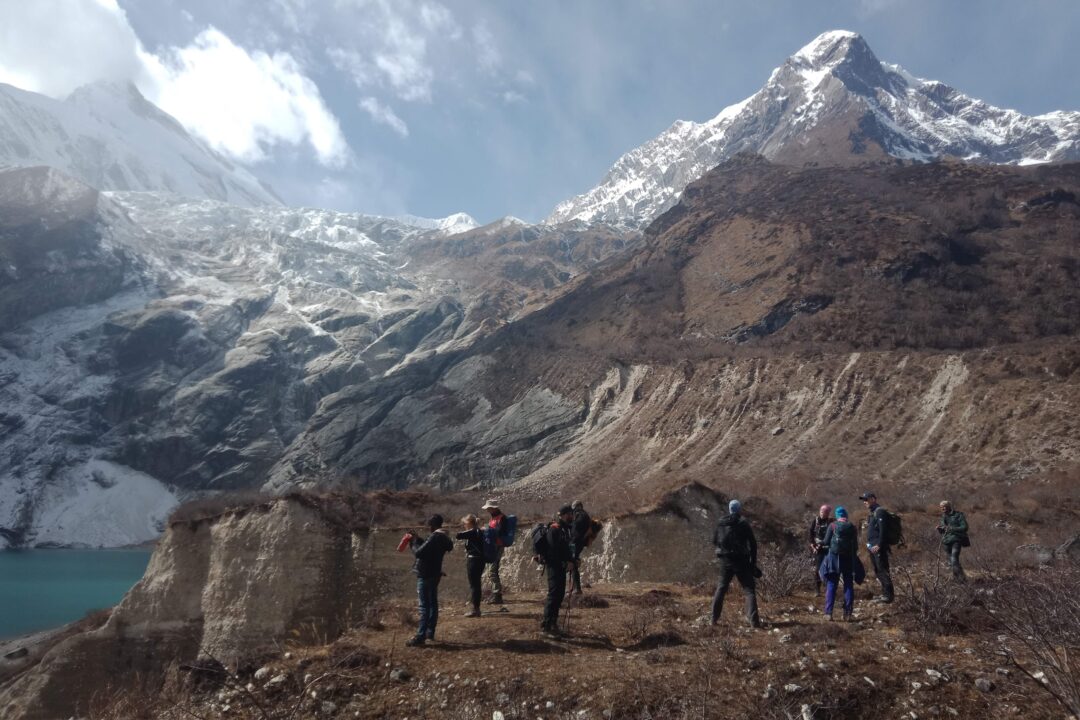
Trip Facts
- Destination Nepal
- Activity Expedition
- Duration 35 Days
- Trip Difficulty challenging
- Max. Altitude 8,163 meters
- Best Time Aug to Oct
- Start and End Kathmandu - Kathmandu
- Meals Breakfast Lunch / Dinner
- Accommodation 5 star hotel in Kathmandu &Camping/Tea house
- Group Size 2 - 40
Trip Highlights
- Beautiful streams, glacier valleys, and eye-filling watercourses.
- A beautiful view of the Himalculi and Manaslu snow-capped summits.
- An understanding of Hindu and Buddhist cultures.
- Crossing the stony, 5106-meter-high Larkye La Pass.
- the possibility of witnessing wild, threatened species like snow leopards.
Introduction
At 8,163 meters (26,781 feet) in altitude, Manaslu is the eighth-highest peak in the world. One of the most breathtaking peaks on earth, is in Nepal’s Gorkha district, directly east of the Annapurna mountain.
The word “Manaslu” comes from the Sanskrit word “Manasa,” which means “Intellect” or “Soul.” Since this area was originally opened to trekkers in 1992, few people have visited due to the strenuous physical nature of the route, contributing to the area’s unique “pioneer” feel.
Mount Annapurna is located roughly 64 kilometers to the east of this summit. It was reached on May 9, 1956, by two mountain climbers, Toshio Imanishi and Gyalzen Norbu. Since the 1950s, climbers have been able to reach the summit, which is regarded as one of the world’s fairly difficult high spots.
It is forbidden to enter the Manaslu Circuit and requires restricted area permits. This means that instead of being overrun by hikers, this valley has kept its own cultural identity. Woods, lowland farming areas with rice fields that seem to be carved easily into the hill, and the Budhi Gandaki Gorge, where crystal-clear streams rush past, are all part of the walk.
Staying at teahouses along the trail allows trekkers to experience the customs and hospitality of the area. Praying and thinking positive thoughts up to the heavens, go by mani walls, prayer wheels, chortens, and Tibetan flags waving in the wind. This area also includes the Manaslu Conservation area, which is home to the endangered snow leopard.
At a height of 4700 meters is Manaslu Base Camp. The mountain’s long crests make it possible to climb from any direction to the summit, which is dramatically above the surrounding landscape. Out of the six ways, the route that heads south is the most direct and the route that heads northeast is the most popular.
Best Seasons for Mt. Manaslu Expedition
At times, the weather in the Himalayas can be harsh and unpredictable. The right time and season to explore the wild and unforgiving high-altitude environment are crucial to consider.
Spring (March to May)
The weather is more consistent and milder during this time of year than it is during other months. For climbers, this means that now is a great time to be ready and start their ascent.
The wind will be softer and the track easier to follow than in previous seasons. However, climbers looking for a more sedate and tranquil climbing experience may find that the spring season is typically less popular than the fall season.
Summer/Monsoon (June to August)
Steer clear of June through August, which is summertime. The monsoon brings warm, muggy weather with hazy visibility from clouds and mist. Leeches and landslides are a major risk at this time of year.
There may be a significant amount of snowfall in the upper parts of the mountain, and the area receives a lot of rainfall. Climbing is not advised due to snowfall and the possibility of an avalanche.
Fall / Autumn (September to November)
Autumn is when most international climbers get ready to ascend Manaslu, the eighth-highest peak in the world. Additionally, October is a significant month in the region’s culture. This is the season when a lot of festivals are held. The region is also peppered with several vibrant trees.
Clear skies, little precipitation, and comfortable temperatures make for ideal climbing conditions in the largely stable weather. Climbers frequently choose the autumnal season because of the comparatively consistent weather patterns and unobstructed views that provide a greater glimpse of the breathtaking Himalayan landscape.
Winter (December to February)
It is significant to note that because of the severe weather, significant snowfall, and elevated risk of avalanches and other hazards, ascending Manaslu during the winter is generally not advised. In addition, climbers need to be ready for unforeseen weather changes and be aware of the possible threats related to the Himalayas’ shifting weather patterns.
Sharp temperature reductions combined with recurrent heavy storms provide extremely hazardous climbing conditions. The cold and strong gusts can make even the easiest parts of the climb dangerous.
Manaslu Expedition Difficulty
Mount Manaslu is a challenging climb, even though it is the eighth-highest peak in the world. A climber with average stamina needs three hours to finish a section. The degree of difficulty of every summit depends on several factors, such as the weather and temperature, the route you pick, the physical fitness of the climber, your climbing abilities, and your capacity to reach high elevations.
A difficult climbing experience called the Manaslu Expedition entails reaching Mount Manaslu’s peak, the world’s eighth-highest mountain. The weather might also contribute to the difficulty of the ascent. For example, the abrupt reduction in barometric pressure will affect the climber’s body if the air temperature is frigid. The joints are strained more as a result.
Because of the low oxygen and low air pressure at high altitudes, there is also a danger of acute mountain sickness (AMS). To prevent it, it is crucial to routinely acclimatize, maintain hydration, and have a calm attitude.
An additional issue that exists is Manaslu Falls. These are potentially fatal. A fall into a crevasse can result in fatalities or seriously injured people. Commercial organizations designate roads with defined lines to reduce the possibility of accidents. Climbers avoid problems as a result of this.
Itinerary Outline
Day 1: Arrival in Kathmandu (1400m).
Day 2: Rest in Kathmandu and Preparation.
Day 3: Drive from Kathmandu to Besisahar (760m).
Day 4: Drive to Dharapani
Day 5: Trek from Dharapani to Gowa.
Day 6: Trekking to Bhimthang (3,720m).
Day 7: Acclimatization at Bhimthang.
Day 8: Trek from Bhimthang to Samdo via Larke Pass (5,160m).
Day 9: Trek to Sama Gaun.
Day 10: Trekking to Manaslu Basecamp (4700m).
Day 11-22: Rotation: (Basecamp – Rotation (Camp I, Camp II, touch Camp III) – Basecamp).
Day 23-29: Summit Push: (Base Camp – Manaslu Summit (8,163m)– Base Camp).
Day 30: Trek back to Sama Gaun.
Day 31: Trek to Namrung.
Day 32: Trek to Philim.
Day 33: Trek from Philim to Machha Khoa.
Day 34: Drive from Machha Khola to Kathmandu & transfer to the Hotel.
Day 35: Final departure.
Alternative High-Altitude Adventures Around Mt. Manaslu Expedition
If you’re inspired by the challenge of the Mt. Manaslu Expedition (8,163m) but are seeking different experiences that blend both trekking and climbing, there are several fantastic alternatives. These options offer unique routes, epic Himalayan views, and a range of challenges for both trekkers and climbers:
- Cho Oyo Expedition – 45 Days: A slightly more accessible 8,000m peak, offering a thrilling adventure with stunning vistas and a less technical climb.
- Mt. Dhaulagiri Expedition – 50 Days: A challenging climb that combines remote terrain, high-altitude passes, and breathtaking views, perfect for seasoned mountaineers.
- Annapurna Circuit Trek – 16 Days: This legendary trek offers diverse landscapes, a crossing of the Thorong La Pass, and panoramic views of the Annapurna Massif.
Detailed Itinerary
-
Day 1: Arrival Kathmandu Airport, pickup to hotel - 1,300m
Altitude: 1300mMeals: Breakfast / lunch / DinnerAccommodation: 5 Star hotel in Kathmandu -
Day 2: Kathmandu day sightseeing - 1,300m
Altitude: 1300mMeals: Breakfast / lunch / DinnerAccommodation: 5 star hotel in Kathmandu -
Day 3: Kathmandu Equipment check day - 1,300m
Altitude: 1300mMeals: Breakfast / lunch / DinnerAccommodation: 5 star hotel in Kathmandu -
Day 4: Drive from Kathmandu to Mache khola 900m - 08 hrs
Altitude: 900mMeals: Breakfast / lunch / DinnerAccommodation: Tea house -
Day 5: Trek to Jagat 1,400m - 08 hrs
Altitude: 1400mMeals: Breakfast / lunch / DinnerAccommodation: Tea house -
Day 6: Trek to Dang 1,880m - 08 hrs
Altitude: 1880mMeals: Breakfast / lunch / DinnerAccommodation: Tea house -
Day 7: Trek to Namrung 2,650m - 08 hrs
Altitude: 2650mMeals: Breakfast / lunch / DinnerAccommodation: Tea house -
Day 8: Trek to Shyla Gaou 3,500m - 06 hrs
Altitude: 3500mMeals: Breakfast / lunch / DinnerAccommodation: Tea house -
Day 9: Rest day in Shyla 3,500m hike to Pugen Gompa 3,850m - 05 hrs
Altitude: 3500mMeals: Breakfast / lunch / DinnerAccommodation: Tea house -
Day 10: Trek to Sama Gaou 3,500m - 02 hrs
Altitude: 3500mMeals: Breakfast / lunch / DinnerAccommodation: Tea house -
Day 11: Rest day in Sama Gaou - 3,500m
Altitude: 3500mMeals: Breakfast / lunch / DinnerAccommodation: Tea house -
Day 12: Trek to Base camp 5,200m - 07 hrs
Altitude: 5200mMeals: Breakfast / lunch / DinnerAccommodation: Camping -
Day 13- Day 42: Climbing time
Altitude: 5200m up to 8163mMeals: Breakfast / lunch / DinnerAccommodation: Camping -
Day 43: Trek back to Sama Gaou 3,500m - 04 hrs
Altitude: 3500mMeals: Breakfast / lunch / DinnerAccommodation: Tea house -
Day 44: Trek to Gow 2,200m - 06 hrs
Altitude: 2200mMeals: Breakfast / lunch / DinnerAccommodation: Tea house -
Day 45: Trek to Phalim 1,880m - 06 hrs
Altitude: 1900mMeals: Breakfast / lunch / DinnerAccommodation: Tea house -
Day 46: Trek to Mache khola 900m - 08 hrs
Altitude: 900mMeals: Breakfast / lunch / DinnerAccommodation: Tea house -
Day 46: Drive from Mache Khola to Kathmandu - 1,300m
Altitude: 1300mMeals: BreakfastAccommodation: 5 Star hotel in Kathmandu -
Day 47: Rest day in Kathmandu - 1,300m
Altitude: 1300mMeals: BreakfastAccommodation: 5 star hotel in Kathmandu -
Day 48: Kathmandu - 1,300m
Altitude: 1300mMeals: BreakfastAccommodation: 5 star hotel in Kathmandu -
Day 49: Departure at Kathmandu airport - 1,300m
Altitude: 1300mMeals: Breakfast
What's included
- Arrival & Departure: Airport Transfer-Airport/Hotel/Airport
- Accommodation: 4 nights at a 4* Hotel in Kathmandu on bed & breakfast Basis-Double Room
- Member's transportation: Kathmandu-Samagaun-Kathmandu
- Transportation: All required equipment Transportation for all Members and Staffs from Kathmandu-Samagaun–Basecamp (by Porters)- Samagaun (by porters)- Kathmandu
- Permits: Manaslu permit, National park & TIMS permit
- Food & Lodging: 3 meals a day while Trekking & at Basecamp for members & Staffs
- Dinner: 1 Farewell Dinner at a tourist-standard restaurant in Kathmandu with Nepalese Staff
- Oxygen: 2 oxygen bottles for each member and 1 oxygen bottle for each high-altitude Sherpa
- Mask & Regulator: 1 Set of top Out mask for each member and high-altitude Sherpa
- High Altitude Climbing Sherpa:1 Climbing Sherpa per member
What's not included
- International airfare to and from Kathmandu.
- Nepalese Visa Charges
- Lunch & Dinner in Kathmandu
- Extra night in Kathmandu: Extra nights’ accommodation in Kathmandu. In case of early arrival or late departure, early return from the expedition (due to any reason) than the scheduled itinerary.
- Insurance: Travel and High-Altitude Insurance / Accident / Medical / emergency evacuation
- Personal Expenses: Telephone, Internet, Laundry, any Alcoholic beverages, Personal equipment, and shopping
- Sherpa summit Bonus: Mandatory – Minimum USD 1,200
- Tips: Please calculate some tips for Basecamp staffs and porters
- The full set of Member's personal climbing equipment & clothing
- Rescue Evacuation: Emergency rescue evacuation cost, if needed, and all other expenses of personal nature
- Any other item not listed in the "Price Includes" section.
Trekking Gears
Before embarking on the Everest Base Camp Trek, it is crucial to meticulously pack the necessary clothing and gear, while also acquiring general knowledge about the trekking areas. As is well-known, the majority of trekking routes in Nepal commence from the subtropical region and ascend through the sub-alpine zone, eventually reaching the alpine zone above 4000m.
For instance, the ultimate destinations of many trails in the upper Khumbu region include Everest Base Camp, Kalapatthar, Gokyo, and the three high passes. All these locations are situated at altitudes exceeding 4,800m above sea level. Several treks initiate from various points such as Kathmandu, Lukla, Jiri, Bhandar, Salleri, Khari Khola, or Thame Dada.
To ensure a safe and comfortable trek in the Himalayan region, it is highly recommended to bring the appropriate equipment and gear to cope with the cold temperatures. The following is a list of essential equipment and gear, which can be purchased either in the Thamel market or brought from your home country:
Baggage
- 70-100 liters Duffle bag
For trekking and expeditions, a duffel bag is essential to pack all kinds of trekking equipment. Duffel bags come in various sizes, ranging from 60 liters to 100 liters. There are different brands available, such as The North Face, Sonam, Sherpa, Rab, and Everest Hikes. You can purchase these bags both online and offline in your homeland or in Kathmandu, particularly in Thamel's trekking shops. The cost varies depending on the brand, ranging from $15 to $100.
- Water proof day pack 30-40 liters
For hiking and trekking, you can choose from various brands of day bags. We recommend a 30 to 45-liter waterproof, strong, and good-quality day bag. Prices range from $40 to $200, depending on the brand and quality. You can purchase it in your homeland or buy it at the Thamel market (a trekking shop). Typically, this bag is used for day hiking and carries toiletries, emergency medical supplies, snacks, a water bottle, a jacket, warm shirts/t-shirts, a hat, trekking poles, and gloves.
- Pancho / Raincoat
Rain, wind, and snow are common in trekking areas. Typically, to avoid rain, we use a poncho, which also helps keep our body, clothes, and day pack dry. The cost of a raincoat is $10 to $50, depending on the quality, and it can be found in Thamel (a trekking shop). Alternatively, if possible, you can bring one from your own source.
- Power Bank / Trekking Solar
In the Himalayas, a trekking area, electricity is limited due to a small hydro power station. Sometimes, the electricity may not work, and often solar panels are used in most places. If the day is not sunny, then solar panels may not work. In that case, we can use our own backup to charge electronic devices. The quality makes the price vary from $50 up to $150. You can buy it in a Kathmandu trekking shop, or you can bring it on your own.
- Water Filter
During mountain treks, it is essential to stay hydrated by drinking either hot or cold water. The mountain water is robust and rich in minerals. Having a water filter machine allows you to filter this water. This is not only environmentally friendly but also cost-effective, as plastic bottled water can be expensive. The price range for water filters is $50 to $100, depending on the brand. You can purchase one in your own country or buy it at a Thamel trekking shop.
- Sleeping bag (comfort rated _20)
Normally, we use a sleeping bag during camping trekking and teahouse trekking. In teahouses, we are provided with blankets, but during the busy season, the blankets may not be sufficient. That's why we highly recommend owning a sleeping bag. Sleeping bags come in different types, ranging from -5 degrees to -30 degrees, and they vary in price. If you choose to buy a local Nepali product, the cost may not be expensive, ranging from Rs 5000 to Rs 20000. However, if you prefer a brand like The North Face, Sonam, Sherpa, or RAV, the cost can range from $200 to $1000. You can purchase them online or offline.
In Nepal, you have the option to rent or buy a sleeping bag. If you opt for a trekking package, the organizer will arrange sleeping bags based on different trekking areas.
- Head torch
During our Himalaya trekking, we ventured into remote areas where electricity and lighting systems were scarce, even in teahouses and high passes such as Thorang Pass, Larkey Pass, and the three high passes. In these places, especially during nighttime trips to the toilet or while crossing high passes, a headlight is essential. Headlights come in different types, including a normal one, one with a battery, or another with an electric source, ranging in cost from $10 to $50. You can purchase them online or offline, either from trekking shops in Thamel or in your home country.
- Water bottles 1 lit 2
During Himalayan trekking, it is advisable to carry two types of bottles: a 1-liter small thermos for hot water, tea, or coffee, and another 1-liter bottle for regular drinking water. The prices for these bottles range from $7 to $50. You can purchase them at Thamel trekking shops or in your home country. In Nepal, these bottles are available both online and offline.
- Sun glass (100% up protection)
During Himalayan hiking and trekking, it is essential to have sunglasses that provide protection against dust, wind, snow, cold, and heat. Different weather conditions require different types of sunglasses. We highly recommend reputable brands for sunglasses, with prices ranging from $10 to 200%. These sunglasses are readily available both online and offline. You can conveniently purchase them from trekking shops in Kathmandu Thamel or from retailers in your own country.
Clothing Essential
- Water proof jacket
During Himalaya hiking and trekking, where you may encounter rain, wind, cold, heat, dust, and snow, it is essential to invest in a high-quality waterproof jacket for protection. Various brands offer reliable options, such as The North Face, Sherpa, Sonam, Black Diamond, and RAB, with prices ranging from $100 to $500. These jackets are available for purchase both online and offline. You can find them at The Kathmandu Thamel trekking shop or in stores in your own country.
- Warm down jacket
During the trekking, we need a down jacket for cold places. We highly recommend a local or international brand depending on your budget. The cost will start from $5 and can go up to $1000. The recommended brands are "The North Face, Sonam, Black Diamond, Sherpa," which you can buy from your home country or in Kathmandu Thamel trekking shops. They are available both online and offline.
- Warm jumper
When reaching the teahouses during Himalayan treks, it is advisable to change into warmer clothes. We highly recommend bringing a jumper, and there are both local and international brands available, depending on your budget. Prices start from $30 to $120. If you already have one, that's fine; otherwise, you can purchase it in Nepal from the Thamel market, both online and offline.
- Trekking trousers
During Himalaya trekking, it is essential to have waterproof trousers to protect against rain, wind, dust, cold, and snow. We highly recommend choosing a brand based on your budget, with prices ranging from $20 to $150. Some notable trekking trouser brands include "The North Face," "Sonam," "Black Diamond," and "RAB." These trousers can be purchased both online and offline. If you already have them, you can bring them along; otherwise, you can purchase them at the Nepal Thamel Market.
- Base layer shirts
Normally, during Himalayan trekking, we use base layer shirts to protect ourselves from wind, dust, sun, and rain while hiking. There are both local and international brands available, with costs ranging from $20 to $120. You can purchase them either online or offline. If you already have one, you can bring it with you; otherwise, you can buy it at a trekking shop in Nepal.
During Himalayan trekking, the trekking areas can be extremely cold. We highly recommend purchasing a set of thermal clothing. There are both local and international brands available, such as The North Face, Sonam, Sherpa, Black Diamond, Kathmandu, and Everest. The cost can range from $50 to $250, and you can find these sets both online and offline. If you already have a set, you can use that; otherwise, we recommend buying one in Nepal, specifically at the Thamel market.
- Sunhat/warm hat/beanie
During Himalayan trekking and hiking, it is advisable to wear a sun hat to protect yourself from the sun. Additionally, when feeling cold, you can use your own woolen hat. We highly recommend purchasing either local or international brands, with prices starting from $5 and going up to $25. You can find these hats in the Thamel market in Nepal.
- Scarfs
During Himalayas trekking, it is essential to protect your neck, ears, mouth, and nose. We highly recommend purchasing different types of scarves, which are available in Nepal Thamel trekking shops. Prices start from $3 and go up to $25.
- Hiking boots
During Himalayan hiking and trekking, the most crucial equipment is footwear, particularly trekking boots. These boots are essential for safeguarding your ankles, ensuring safe walking, and being physically and mentally prepared for the trek. We highly recommend purchasing internationally recognized waterproof shoe brands such as Salomon, Hoka, Lowa, and Marmot. The cost typically starts from $150 and can go up to $400. You can find these brands in both Europe and Asia, including the Kathmandu Thamel market.
- Trekking socks / liner sock/heavy mountaineering socks
During Himalaya hiking and trekking, it is essential to have different types of socks depending on your budget. We highly recommend investing in trekking socks, with prices ranging from $3 to $30. There are both local and international brands available, and you can purchase them in Kathmandu's Thamel market.
- Sun protection / Lip Gaurd
During Himalayan hiking and trekking, we encounter various weather conditions such as sun, snow, cold, and dust, which can dry out the skin and lips. In such situations, it is essential to use protection, especially if you have sun allergy. We highly recommend purchasing lip balm and sunscreen, with costs ranging from $1 to $30. These products can be bought at trekking shops in Thamel, Kathmandu.
- Wash bag toiletries
During Himalayan hiking and trekking, we consistently rely on nature for various needs. For long toilet breaks, it is essential to carry toilet paper. Whether at tea houses or during the trek, having a good quality toilet paper is crucial. We highly recommend purchasing it from Thamel trekking shops, where the cost ranges from $1 to $2.
- Antibacterial hand wash
During Himalayan hiking and trekking, where access to washing towels or hot water is limited, it is recommended to purchase wet paper. The cost starts from $2 and can go up to $8 at medical shops in Thamel.
- Travel towel
During Himalayan hiking and trekking, the hotels are not luxurious; they are based on local standards. It is advisable to carry both a large and a small towel for drying the face and body. These items can be purchased at trekking shops in Thamel, with prices ranging from $2 to $20.
- Small pad lock to lock your bag
While hiking and trekking in the Himalayas, our duffel bag is carried by the porter. It is advisable to secure all your equipment inside the bag with a lock. We highly recommend purchasing a small lock, with costs ranging from $1 to $5, which can be found in Kathmandu's trekking shops.
- Medical Kits
During Himalayas hiking and trekking, most of the time, we are in remote areas and need to carry a basic medical kit with us. The emergency primary medicines we should have depend on our needs. You can buy them at a medical shop in the Thamel market. The basic first aid kit should include antiseptic cream, throat lozenges, diarrhea treatment (like loperamide), altitude sickness medication (such as acetazolamide), painkillers, insect repellent, plasters, blister treatment, insect repellent, and rehydration salts like Dioralite. Additionally, it's advisable to carry glucose tablets and multi-vitamin tablets.
- Trekking pole / Sleeping bag liner / Travel clothes / Camera / Pen knife
Normally, when getting ready for Himalayan hiking and trekking, both physically and mentally, it's essential to have trekking poles. They provide support for another leg, and there are various types available. We highly recommend investing in a good quality pole.
Inside your sleeping bag, a liner is necessary to keep warm. Before and after trekking, comfortable city clothes are essential. You can use your old ones or opt to buy new ones depending on your preference.
During the trek, capturing different angles and views with a good camera is crucial. You can use your existing one or invest in a new camera based on your budget.
In case of emergencies or for general use during the trek, it's advisable to have a Swiss small knife. You can purchase all these items at Thamel trekking shops.
What Not To Pack?
- Jewelry and valuables things, Heavy zoom lenses for your camera, Too many cotton clothes/ more than one pair of jeans, Bulky towels
During Himalayan tours, including activities such as hiking, trekking, peak climbing, and expeditions, we strongly advise against bringing items such as jewelry, gold, excessive cash, large cameras, too many cotton clothes, thick towels, etc.
Climbing Gear
- Climbing boots
- Climbing jacket and paint set
- Ice Axe
- Climbing Crampons set
- Climbing Rob
- Expedition day bag
- Harness set 6
- Climbing Glove
- Climbing torch light
- Climbing Sleeping bag
- Climbing tend
- Climbing water proof matrix
- Climbing cooking pot and small gas with stop
- Oxygen cylinder
- mitts or jumars
- Climbing trekking pole
- pee botal
- Climbing tea cup ,spoon and fork
- Climbing helmet
FAQs of Mt. Manaslu Expedition
-
1. What is Mt. Manaslu?
Mt. Manaslu (8,163m / 26,781 ft) is the world’s eighth-highest mountain, located in the Mansiri Himal of western Nepal, near the Tibet border. -
2. Where is Mt. Manaslu located?
It lies in Nepal’s Gorkha District, northeast of Kathmandu, within the Manaslu Conservation Area. -
3. What is the Manaslu Expedition?
The expedition is the climb to the summit of Mt. Manaslu, starting from Kathmandu, involving trekking, acclimatization, and high-altitude climbing. -
4. How difficult is climbing Mt. Manaslu?
Though considered one of the easier 8,000m peaks technically, it is still very challenging due to altitude, tricky sections, unpredictable weather, and risk of altitude sickness. Excellent fitness and experience are essential. -
5. Is there an age restriction for the Manaslu Expedition?
No fixed age limit, but climbers must be in excellent physical shape to handle the high-altitude demands. -
6. What is the best season to climb Manaslu?
The best climbing windows are in Autumn (September–October) and Spring (April–May), when the weather is more stable and snow conditions are favorable. -
7. How long does the Manaslu expedition take?
Typically between 35 to 45 days, covering the approach trek, acclimatization, and summit attempts. -
8. Do I need prior mountaineering experience?
Yes. Climbers should have experience above 6,000m, glacier travel, and fixed rope climbing skills. -
9. Are permits required?
Yes. You need the Manaslu Climbing Permit, Restricted Area Permit, Manaslu Conservation Area Permit (MCAP), and Annapurna Conservation Area Permit (ACAP). -
10. Can I climb Manaslu without Sherpa support?
It’s not recommended due to technical difficulties and safety. Most climbers use experienced Sherpas certified by IFMGA or NNMGA. -
11. How many camps are there above base camp?
Usually four: Camp I (5,700m), Camp II (6,400m), Camp III (6,800m), and Camp IV (7,400m). -
12. How do we reach Manaslu Base Camp?
By trekking 7–10 days on the Manaslu Circuit trail from Soti Khola or Machha Khola. -
13. Is oxygen used during the climb?
Yes, supplemental oxygen is commonly used above Camp III or IV, although some elite climbers go without it. -
14. What kind of food is served during the expedition?
High-calorie, nutritious meals including Nepali, Tibetan, and Western dishes. Special diets can be accommodated. -
15. How is drinking water managed?
Boiled or filtered water is provided. Climbers often carry purification tablets as backup. -
16. What gear is required?
Full alpine mountaineering gear including double boots, crampons, ice axe, down suit, helmet, harness, and glacier goggles. A detailed checklist is provided upon booking. -
17. Are there risks like avalanches or crevasses?
Yes, especially between Camps I and II. Route setting and constant weather monitoring are vital. -
18. What is the altitude of Base Camp?
Approximately 4,800 meters (15,748 ft). -
19. How do we acclimatize?
Through gradual trekking, rest days, and climb-high sleep-low rotations between camps. -
20. Is communication available during the expedition?
Yes, via walkie-talkies, satellite phones, and devices like Garmin inReach for weather updates and emergencies. -
21. Is internet available at Base Camp?
Some operators offer Wi-Fi or satellite internet, though it can be slow and costly. -
22. What happens in case of altitude sickness?
Immediate descent, oxygen administration, and medical care are provided. Helicopter evacuation is arranged if necessary. -
23. Do I need travel insurance?
Yes, including high-altitude evacuation coverage up to 8,000m is essential. -
24. Can I charge electronic devices?
Yes, solar panels or generators are available at Base Camp. Bring extra batteries or power banks for higher camps. -
25. How cold does it get on Manaslu?
Temperatures can drop to -30°C (-22°F) or lower at high camps and during summit attempts. -
26. How many people are in a climbing group?
Typically 4–12 climbers, supported by Sherpas, cooks, and base camp staff. -
27. What is the success rate?
Success ranges between 60% and 80%, depending on weather and climber readiness. -
28. What is the death rate on Manaslu?
Lower than many other 8,000m peaks, but risks remain high; proper acclimatization and support are critical. -
29. What kind of tents are used?
High-quality alpine tents from top brands are used at all camps. -
30. Can I rent climbing gear in Nepal?
Yes, rental shops in Kathmandu’s Thamel area offer gear, but personal high-quality equipment is recommended. -
31. What is the cost of the expedition?
Costs typically range from USD 11,000 to 16,000+, depending on services, group size, and logistics. -
32. What is included in the cost?
Permits, transport, meals, accommodation, guides, Sherpas, porters, tents, base camp logistics, and sometimes oxygen. -
33. Do I need to carry my own gear?
No, porters or yaks carry most equipment; you only carry a daypack during trekking and climbing. -
34. What medical support is available?
Base camp usually has first-aid kits and oxygen; some teams include doctors or Wilderness First Responder-trained staff. -
35. Is Manaslu less crowded than Everest?
Yes, offering a more remote and peaceful climbing experience. -
36. What cultural highlights are on the approach trek?
You’ll pass Tibetan Buddhist villages, monasteries, and stunning valleys along the Manaslu Circuit. -
37. Can the climb be combined with the Manaslu Circuit Trek?
Yes, most expeditions follow this route, adding scenic and cultural richness. -
38. Do I need a liaison officer?
Yes, the Nepali government requires one for all 8,000m expeditions. -
39. Is helicopter evacuation available?
Yes, from base camp or Samagaon, weather and insurance permitting. -
40. Why choose RP Adventures for Manaslu?
We offer experienced Sherpa guides, small-group safety focus, full logistics, cultural connection, and local expertise for a smooth and successful ascent.
Trip You May Like
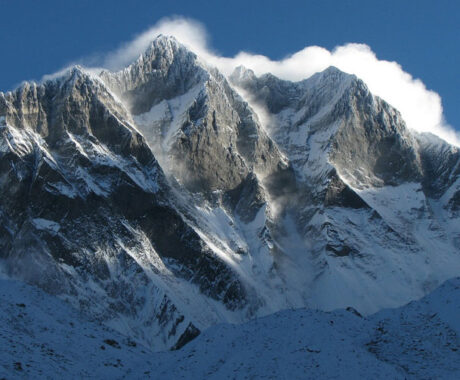
Mt Lhotse Expedition
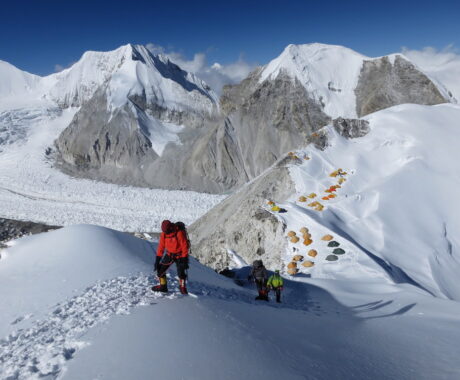
Cho Oyo Expedition
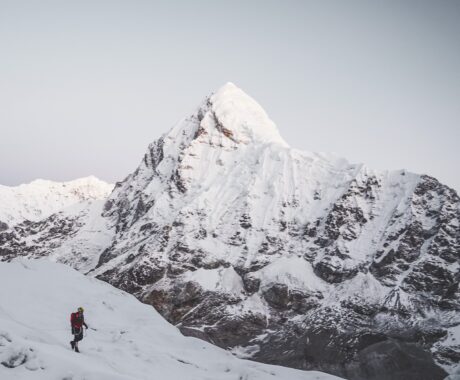
Pumori Expedition
